Trout fishing’s personal for me – I spent a weekend testing rods on Missouri’s Blue Springs Creek, chasing big rainbows in skinny water. These 5 stood out.
Last updated: May 9th, 2025
- Best Overall: St. Croix Trout Series Spinning Rod
- Best Trout Fly Rod: Redington Classic Trout 763
- Best Premium: G. Loomis Trout Series Rod
- Best Ultralight: Bass Pro Shops Micro Lite Graphite Rod
- Best Combo: Shakespeare Trout Spinning Rod and Reel Combo
- Best Steelhead: Okuma SST Trout Spinning Rod
- Methodology
- Choosing the Best Trout Rod
- Final Thoughts
Best Overall: St. Croix Trout Series Spinning Rod
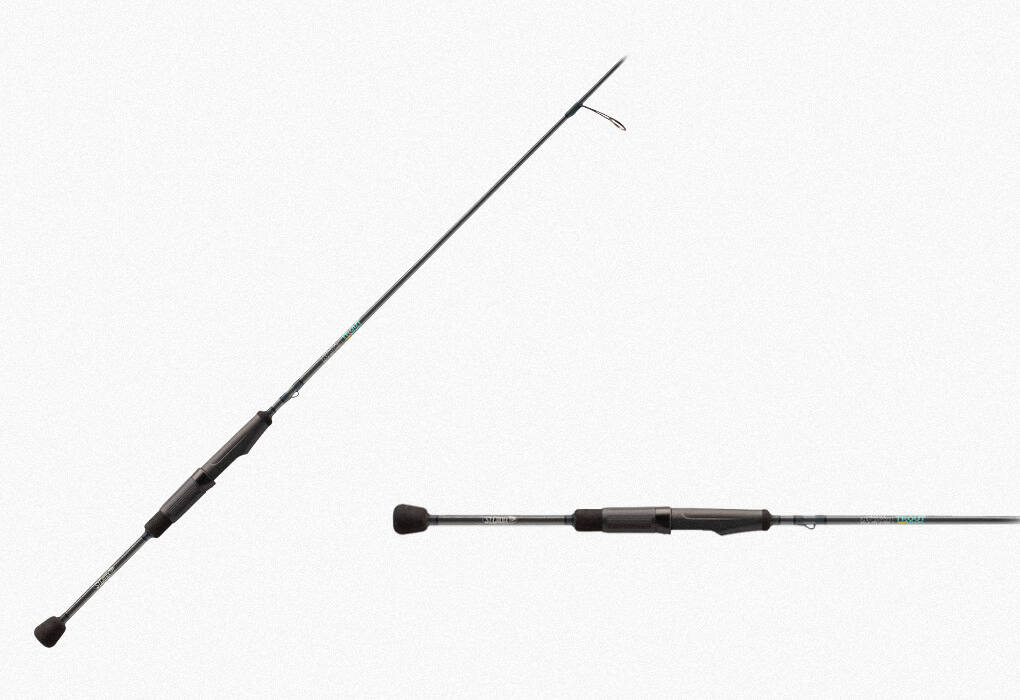
Specs
- Rod Length: 5.4 – 7′
- Rod Material: Carbon Fiber
- Type: Casting
- Power/Action: Med/Extra Fast
Pros
Cons
Why I Chose It
The St. Croix Trout Series Spinning Rod comes in sizes ranging from 5.4 to 7. I tested the 5’10” light version with fast action, priced under $150.
The rod is a single-piece rod that is made of SCll Carbon Fiber.
Once again St. Croix has figured out a way to make a carbon fiber rod feel like a graphite rod. The lightweight feel and sensitivity when using this rod was un-matched in my testing.
The EVA split-grip handle was very comfortable in my hand and I was able to make really long castes upstream in the creek.
Another thing about this rod that I noticed right off the bat was how balanced it was. The rod wasn’t tip heavy which is a good thing when throwing spinners for trout.
Using this rod, I was able to land four trout off of four bites so the hook-up percentage was perfect.
My largest trout was only a little over a pound so I wasn’t able to test the overall strength on this rod but I have no doubt that the extra two layers of flex coat added to the SCll Carbon Fiber blank is more than enough to haul in trout up to three pounds.
This rod is very similar to the St. Croix’s Victory Casting Rod but it’s specifically customized for trout fishing. Think of it as a lighter, more sensitive Victory Rod.
One thing to remember with this rod: It is specifically dialed down to be a trout fishing rod so it’s not going to be able to serve as a crossover rod for bass fishing or inshore saltwater fishing.
Another thing about this rod is that while it is made of high quality materials it’s not durable when coming into contact with hard surfaces. A lot of the ratings for this rod I believe come from non-fishing related contact.
But if you’re targeting cutthroats, rainbows, or browns, this is the perfect rod to add to your arsenal. It led the pack as far as sensitivity, weight, and parabolicity.
It really is an exciting rod that left a lasting impression during my test.
Best Trout Fly Rod: Redington Classic Trout 763
Specs
Pros
Cons
The Redington Classic Trout is a 7’6″, 4-piece rod that features a medium action carbon fiber blank.
When testing the Redington I found that it had excellent feedback and deep bending.
I was using the 3-weight version and I found it ideal for smaller streams and creek fishing, though the 9-foot, 5-weight option would serve as a better all-rounder for most situations.
The reversed half wells grip offers comfortable handling during long days on the water, and the classic styling with cork handle and brown accents gives it a premium look but at an affordable price point.
When paired with the recommended Scientific Anglers Mastery MPX line, this rod performs admirably in most trout fishing scenarios.
What impressed me most during testing was the rod’s versatility and forgiving nature. While it may not match the pinpoint accuracy of rods costing three times as much, it handles roll casts with ease and makes flipping line upstream a breeze.
The maximum casting distance of about 60 feet is more than adequate for most trout fishing situations.
Durability is another strong point – I’ve actually been using a 3-weight Classic Trout for nearly 10 years with minimal issues, despite not being particularly gentle with it.
My best trout came on a long cast to the other side of the stream in an eddy. I let my Pheasant Trout Fly float for a few seconds and noticed the line moving to the left.
I set the hook and the battle begun!
The rod performed beautifully and I managed to drag the 18-inch rainbow into my net for the catch of the day!
For $169, the Redington Classic Trout represents exceptional value in the fly rod market.
It’s an excellent choice for beginners who plan to fish regularly for years to come, as well as for experienced anglers looking for a reliable backup rod.
While it may not excel in any one particular area, it does everything well enough to earn its place as our top pick for trout fly fishing.
Best Premium: G. Loomis Trout Series Rod
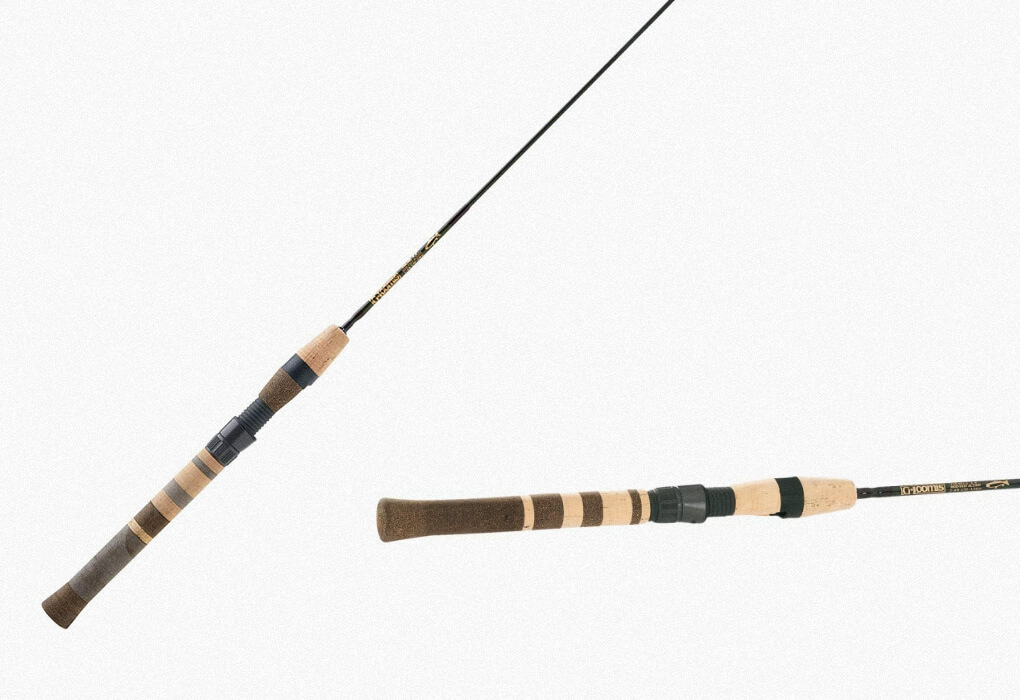
Specs
- Rod Length: 5.9
- Rod Material: Graphite
- Type: Casting
- Power/Action: Ultralight/Moderate Fast
Pros
Cons
Why I Chose It
The G. Loomis Trout Series Rod is a one-piece rod that measures 5.9. It’s made of what G. Loomis calls “GLX Proprietary Blank Materials” which translates to “Graphite Luxury Materials.”
I can vouch for it being luxury because this rod felt like a million bucks when I was using it at Blue Springs Creek.
The GLX Rod is made from a combination of graphite and resin, making it very strong and more than capable of throwing heavier spinners and reeling in larger trout.
Everything felt good on this rod including the guides as I noticed my line flowing through seamlessly when I casted. The line whip was virtually silent because of the Fuji Alconite guides.
The rod was able to make really long casts and my hook-up percentage was 100%, which is not often the case when I trout fish!
The highlight of my trip came when I made a long cast up-river and let a Kalin’s Marabou Jig drop from a section of water that was about a foot deep, to a 3-foot hole where I felt a trout latch on.
I set the hook and reeled in a 18-inch rainbow which the rod handled stellar. I was able to back out the creek and drag him up to dry land without using a net.
One thing to note about the material makeup of the G. Loomis Rod; its extremely high grade graphite blank is a bit brittle when it comes to any contact outside the scope of casting and reeling in fish.
This means you run the risk of it breaking if you drop it bang it into a tree or some other hard surface.
Overall this rod is what it claims to be; a high-end trout rod that is specifically tapered to catch trout. If you’ve never experienced fishing for trout with this rod you are missing out on something special.
I guarantee it will bring your trout fishing experience to the next level and put your other trout fishing rods to shame. Get this rod and don’t look back!
Best Ultralight: Bass Pro Shops Micro Lite Graphite Rod
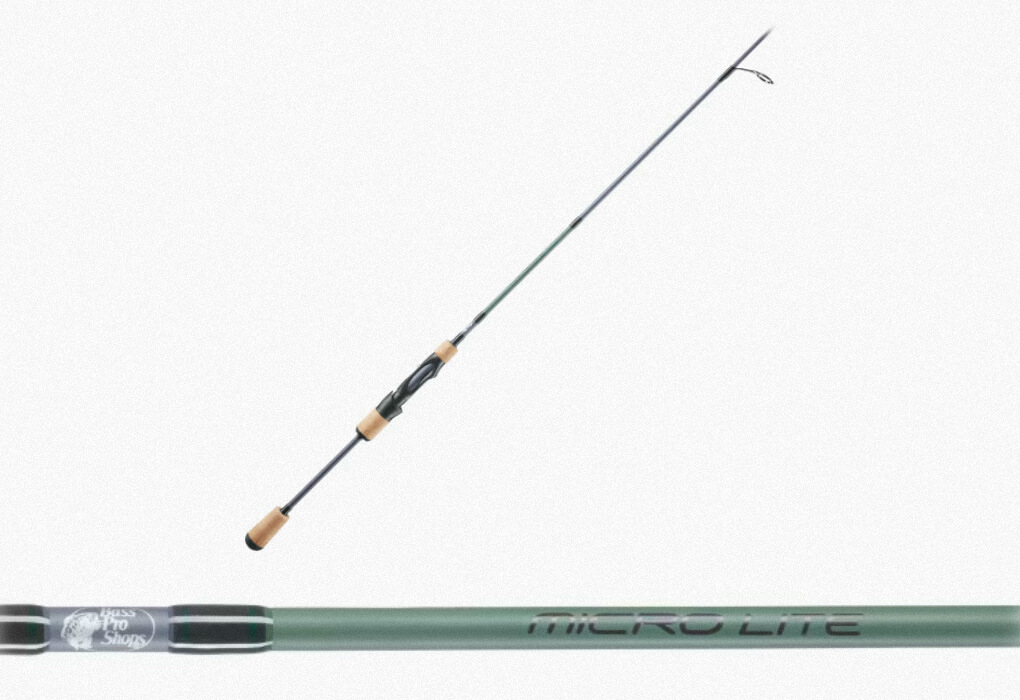
Specs
- Rod Length: 4.6, 5.6, 6, 6.6, 7, 7.6, 8, 8.6, 9.6
- Rod Material: Graphite
- Type: Spinning
- Power/Action: Ultralight/Fast
Pros
Cons
Why I Chose It
The Bass Pro Shops Micro Lite Graphite Rod comes in nine sizes: 4.6, 5.6, 6, 6.6, 7, 7.6, 8, 8.6, 9.6.
The rod is a single-piece rod that is made of IM6 Graphite. As I unpacked the rod that I ordered, I noticed a bit of a crossweave pattern on the rod which turns out to be an added feature.
The pattern is what’s called Bass Pro’s fiber layering pattern which provides overlapping strength to the blank.
It’s always nice to see a company go the extra mile as far as making their rods stronger and more sensitive.
This rod was very similar in weight to the G. Loomis Trout Series Rod when it comes to weight.
This rod is very, very light and I thoroughly enjoyed using it on the creek.
I paired this rod with a Daiwa Regal LT Spinning Reel and felt like a predator wading through the creek.
I was throwing a 1/16 oz rooster-tail in tight spots and ended up catching the most fish out of my entire trip; five rainbows and two browns!
Did I mention this rod was sensitive?
It turns out the rod has a graphite reel seat which allows the sensitivity from the rod to transfer through the reel.
There were some bites where I felt the trout hit the rooster-tail through the handle.
The rod made really smooth casts and smooth retrieves due to the titanium oxide rings inside the guides as well.
As far as strength, my biggest trout was a 14-inch rainbow and the rod held up really well during the battle.
I had to fight the fish a little longer than normal due to the rod being an ultralight but I enjoyed that!
The downside is the rod’s cork handle seems to be made of only average cork and not premium Portuguese cork but that’s minor when it comes to ultralights because they are easy on the hands already with the rod being feather lite
If you’re looking for an ultralight rod to target trout, this is the rod for you! It’s a great option when fishing tight spaces and overgrown creeks where large rods just won’t work.
Best Combo: Shakespeare Trout Spinning Rod and Reel Combo
Specs
- Rod Length: 5.6
- Type: Spinning
- Power: Light
Pros
Cons
Why I Chose It
The Shakespeare Catch More Fish Trout Combo is one of the most affordable ways to get everything you need in one purchase, and I mean everything.
You get a 5’6″ two-piece fiberglass rod with 5 stainless steel guides that’s light but sturdy, paired with a size 25 spinning reel. It’s already spooled with 4-lb Stren mono, so you can literally take it out of the box, tie on the included lure, and start casting. This combo costs just about $40!
I tested it on the creek with the Berkley PowerBait Mice Tails and had surprising success. On one stretch, I hooked into three rainbows using the Mice Tails on back-to-back casts and landed all of them, with the biggest coming in around 13 inches.
The reel was smoother than expected for the price. The 5.5:1 gear ratio let me reel in quickly when needed, and the anti-reverse feature did its job without any hiccups. It’s obviously not a high-end reel, but it didn’t give me any trouble on the water.
The rod, though simple, handled surprisingly well when casting lightweight lures. It didn’t have the finesse or sensitivity of the St. Croix or G. Loomis rods, but it was enough to feel a light strike in moving current.
My only concern was the rod tip: it felt a little fragile, so I wouldn’t go throwing it around or leaning it against rocks.
I think what really stands out about this combo is the value. Besides the rod and reel, you get a utility box with all sorts of trout-ready tackle: bobbers, hooks, split shots, inline spinners, and even a rigging guide with knot instructions.
At the end of the day, I’ll say that this combo makes for an excellent choice for those on a budget or beginners who do not want to go through the hassle of buying separate rod and reel, lures, line, and tackle.
That said, it can also occasionally serve a seasoned angler well, especially as a backup or something that you would like to keep in case you have family or friends without gear joining your trip.
Bass Pro Shops Cabela’sBest Steelhead: Okuma SST Trout Spinning Rod
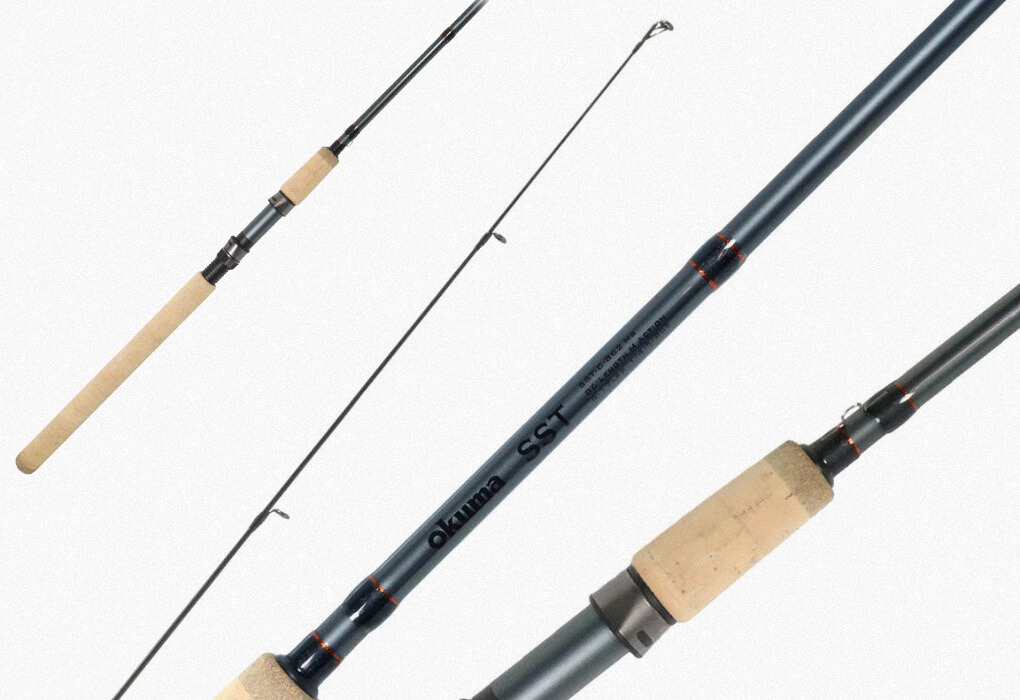
Specs
- Rod Length: 7.6
- Rod Material: Carbon
- Type: Casting
- Power/Action: light/Moderate
Pros
Cons
Why I Chose It
The Okuma SST Trout Spinning Rod is a 2-piece rod that measures 7.6.
The rod is made of 30-ton carbon fiber so it can handle larger rainbow steelheads.
FYI..I consider steelheads to be over 26 inches.
Out of all the rods I used, this one casted the farthest which is one of the reasons why it was selected as best steelhead rod.
It’s a moderate action rod which lets the rod do the work. While the rod made long casts, it lacked accuracy which is expected with moderate action rods.
The rod has guides with zirconium inserts which help with the casting distance and also provides less line-whip due to the smooth finish.
The rod is also great for float fishing which I tried on the creek and was able to set the hook on four out of six fish.
And while these weren’t rainbows of the steelhead size, they were decent sized which allowed me to let the rod do what it does best – fight the fish.
The rod was really parabolic and flexible which allowed it to wear out the fish while saving my arms.
If you’re looking for a cheaper rod in price but of comparable quality, the Ugly Stik Elite Spinning Rod 7’ medium-light/moderate-fast was the closest rival to the Okuma SST Trout Rod.
Both rods are great rods for steelhead but the Okuma led the pack as far as things that I look for that make the perfect steelhead rod.
If you are in the market for a heavier, longer rod to use for grownup rainbows AKA steelheads, this is the rod to add to your arsenal! Get it and reap the rewards!
Methodology
It’s taken much trial and error over my fishing career to be able to know what to look for in a trout rod.
I’ve taken that knowledge and experience, and combined it with a weekend’s worth of rod testing in the northern section of Blue Springs Creek towards Camp Mihaska.
During the two days wading the creek I threw various types of trout lures and painstakingly looked at several rod qualities that make a great trout rod.
During the test I was able to fish different types of river features like eddy’s, white water, small shut-ins, and deep holes in order to test 17 of the top selling trout rods.
Here are some parameters that we used to come up with our guide to choosing the best trout rods:
- Sensitivity: Trout aren’t exactly known for their punishing strikes when inhaling your lure. It’s often that they gently take the lure on their mouth which can make for a very subtle bite.
Because if this, sensitivity is really important in selecting a trout rod
- Action: Rod action is crucial when it comes to trout fishing. Does it have enough load to sling small spinners? Is it fast enough to set the hook quickly on a subtle trout bite?
In my years of trout fishing, I’ve learned that fishing with a rod with the wrong action can severely hurt your chances of catching trout.
- Weight: Rod weight is important when it comes to trout fishing because it often enhances the rods sensitivity. But let’s face it, a light rod comes in handy when hiking the creeks and rivers which is often the case when trout fishing.
- Casting Accuracy: Great casting control is a plus in trout fishing. A properly placed lure next to an unsuspecting trout can mean an immediate strike!
It’s important to choose a rod that excels in throwing small, lightweight trout lures into the exact spot needed.
- Hookup Percentage: Trout are known for the headshaking battle that ensues after the hook-set. A rod that’s too slow will often allow the lure to be thrown, while a rod that’s too fast can rip the hook out of the trout’s mouth.
The hookup percentage will tell the story!
Choosing the Best Trout Rod
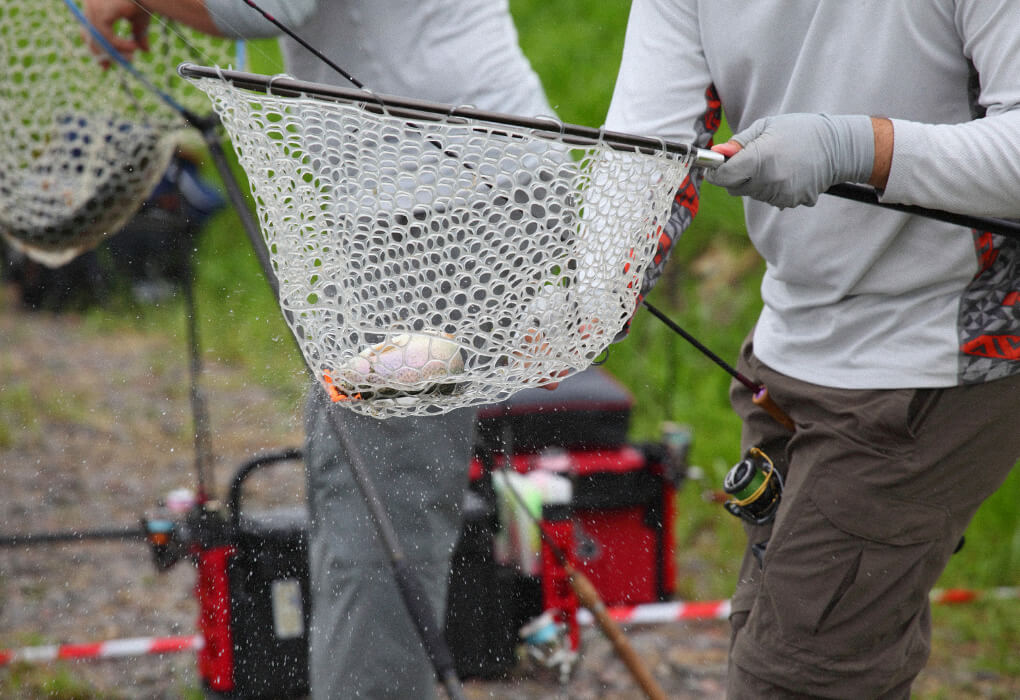
Here is a quick guide to help point you in the right direction when choosing the right trout rod. Remember, it’s important to know what kind of tributaries you’re going to be fishing when choosing your rod.
Also the size of the trout will play a big part in what rod you choose. Let’s take a look at some of the features that you should pay attention to when deciding on what trout rod to guy.
Material
The makeup of the rod blank is important when selecting a baitcasting rod.
Graphite
In the trout fishing world, graphite rods are worth their weight in gold!
The reason for this is that trout are subtle eaters. (Think the opposite of a bass or redfish) When a trout bites your lure it can be awfully hard to feel, so having the most sensitive rod possible is your #1 concern.
Some trout rods can be composite which is a mixture of graphite with fiberglass but I would only recommend these rods when chasing larger trout like steelheads, speckled trout, and lake trout where the added strength is needed.
Rod Action & Power
Action on a trout rod refers to the location on the blank at which the rod bends. For example, a fast action rod will bend about 15% down the blank from the tip.
This makes the rod more sensitive for smaller trout, but more liable to break for larger fish.
The amount of pressure you need to apply to make the rod bend is called “Power.” So for example, a heavy power rod will require a lot of pressure from a heavy fish to bend the rod.
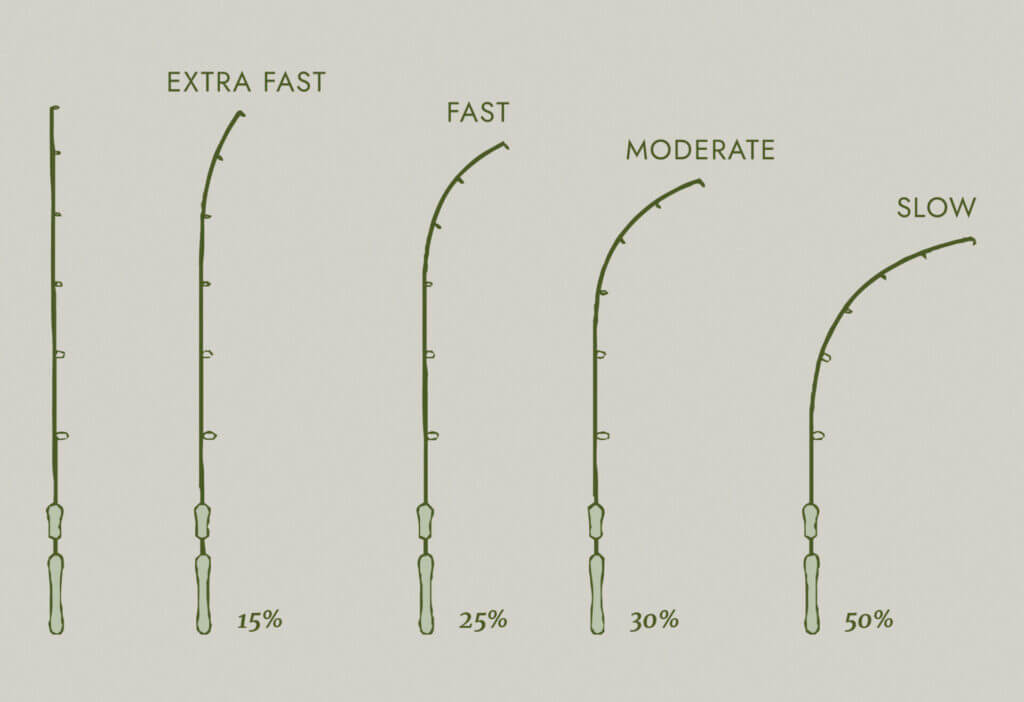
With that knowledge in mind, medium power with an extra fast action rods are ideal for trout in my opinion.
You don’t need to get too carried away with the power of your rod but fast action is always a good way to go in order to set the hook fast on these subtle biters.
Length
The length of your rod is important when determining what kind of water you will be fishing.
If you plan on fishing small creeks or rivers that run through the woods, you’ll want a shorter rod that won’t hang up in the trees.
Also remember that shorter rods are more accurate when casting.
As a quick and dirty tip to figuring out how long your rod needs to be, ask yourself two questions: How big is the area that I’m fishing? And how big are the fish in the river? The bigger the space the longer your casts will need to be.
The bigger the fish, the longer the rod will need to be in order to get the fish in.
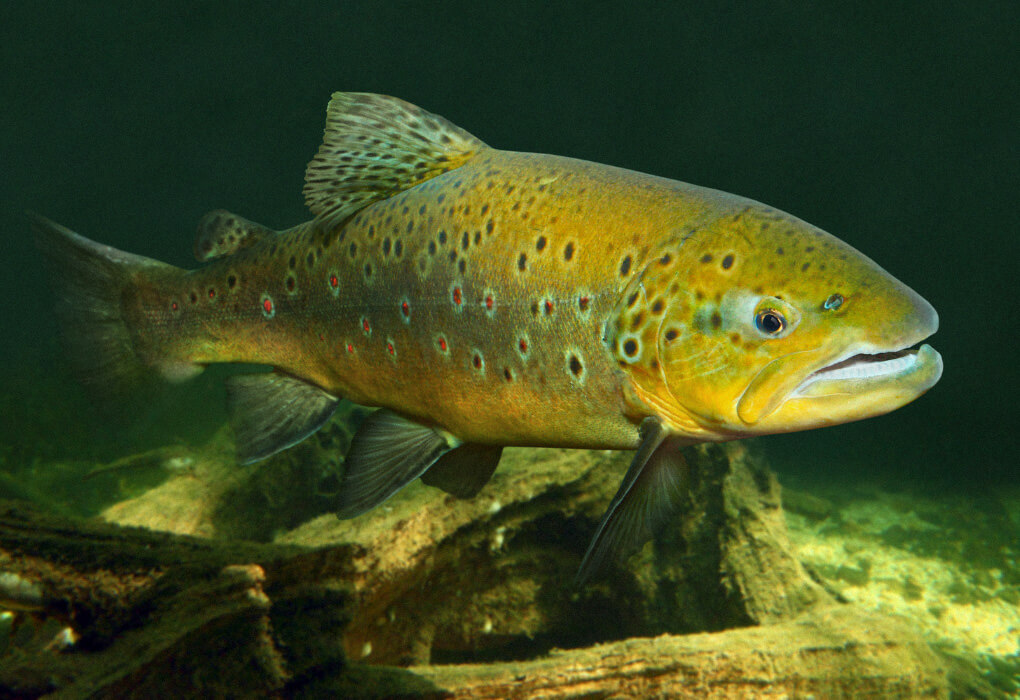
Final Thoughts
Although I brought a ton of knowledge about trout rods into this creek test, I was able to learn even more by trying out each trout rod.
During my test I learned a ton about some really good trout rods and can honestly say that there were some hard choices that I had to make.
So let’s review our top pick!
For the best trout rod overall, I choose the St. Croix Trout Series Spinning Rod. It was a real treat to fish with and I was able to put a lot of trout in the net with it!
While the St. Croix Trout Series Rod won overall, you really can’t go wrong with all the rods mentioned in this Best Trout Rod Guide that I’ve put together.
Give them a try and tell us what you think! We’d love to hear from you!

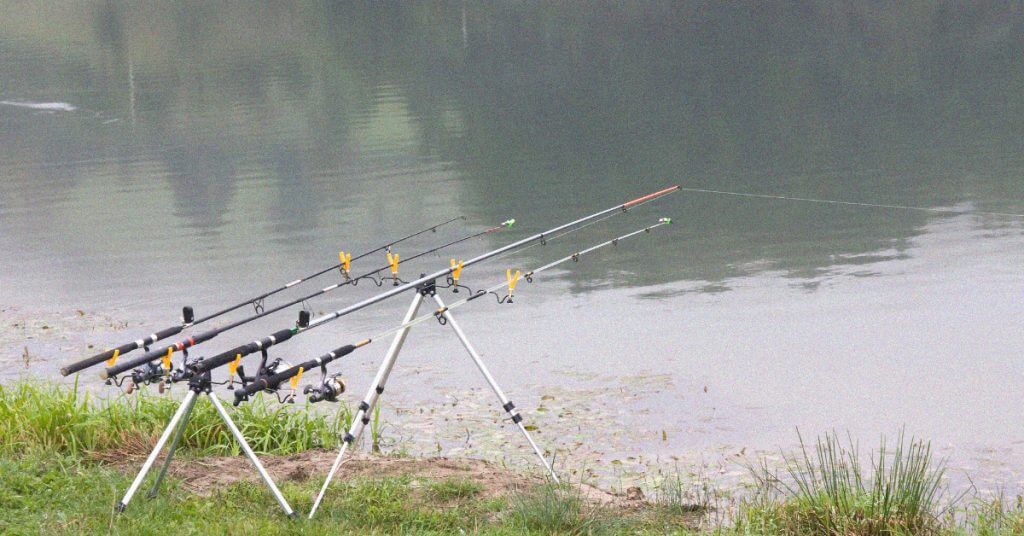
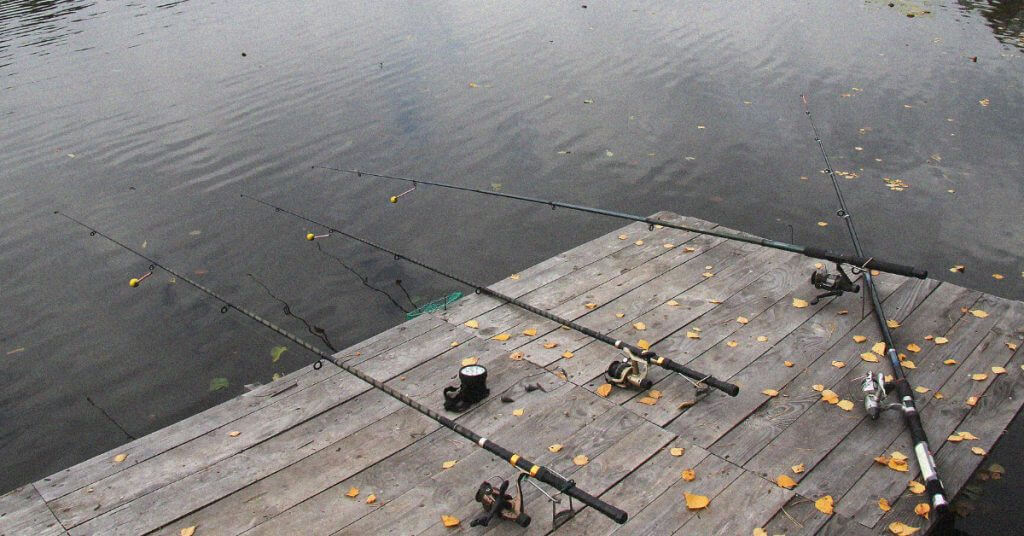


Very Interesting Article.
Very Interesting Article.